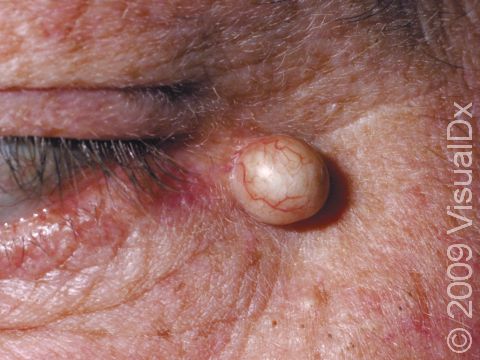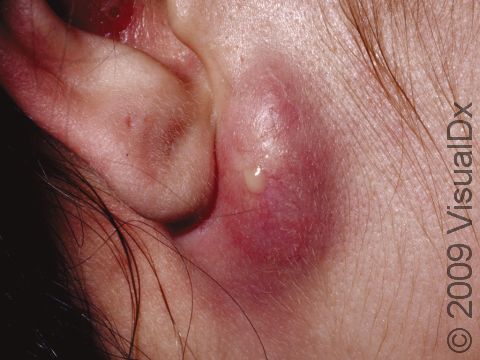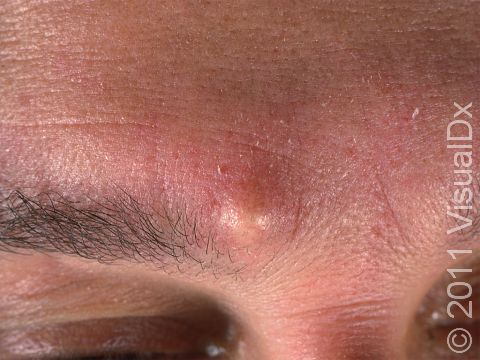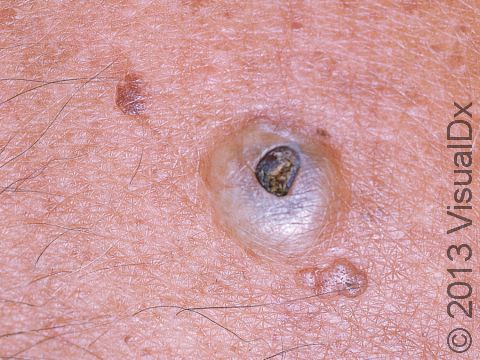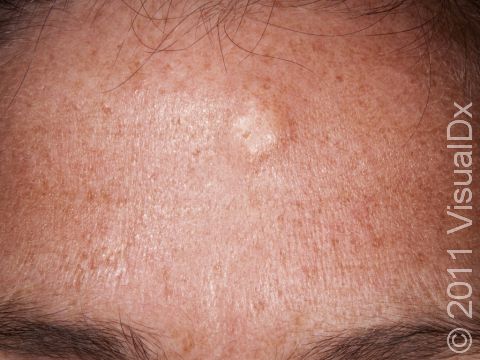Epidermoid Cyst
Epidermoid cysts, sometimes known as sebaceous cysts (a misnomer), contain a soft “cheesy” material composed of keratin, a protein component of skin, hair, and nails.
- Epidermoid cysts form when the top layer of skin (epidermis) grows into the middle layer of the skin (dermis). This may occur due to injury or blocked hair follicles.
- The lesion may be asymptomatic, but rupture of the epidermoid cyst can result in significant discomfort.
Who's At Risk?
Epidermoid cysts are a common lesion that affect people of all ages.
Signs & Symptoms
Epidermoid cysts can be located almost anywhere but are most common on the face, neck, scalp, or trunk.
- A cyst appears as a dome-shaped, skin-colored growth that usually moves when touched and pressed upon. It may have a small opening in the center.
- The cyst can be well-defined or irregular due to prior rupture, scarring, and regrowth.
- If manipulated or infected, the cyst can become red and may be tender.
Self-Care Guidelines
None necessary. It is advised not to try to express the material within cysts as further inflammation and even infection may result.
Treatments
- Inflamed, non-infected cysts may be injected with steroids to reduce inflammation.
- Incision and drainage can provide immediate reduction in the cyst. However, this is a temporary measure. After this treatment, a cyst will refill with the cheesy contents because the lining of the cyst has not been removed.
- Cysts may be removed (excised) surgically.
Visit Urgency
See your primary care physician or a dermatologist if a cyst becomes inflamed or painful.
Trusted Links
References
Bolognia, Jean L., ed. Dermatology, pp.1721-1723. New York: Mosby, 2003.
Freedberg, Irwin M., ed. Fitzpatrick’s Dermatology in General Medicine. 6th ed, pp.778-781. New York: McGraw-Hill, 2003.
Last modified on October 5th, 2022 at 7:22 pm

Not sure what to look for?
Try our new Rash and Skin Condition Finder
